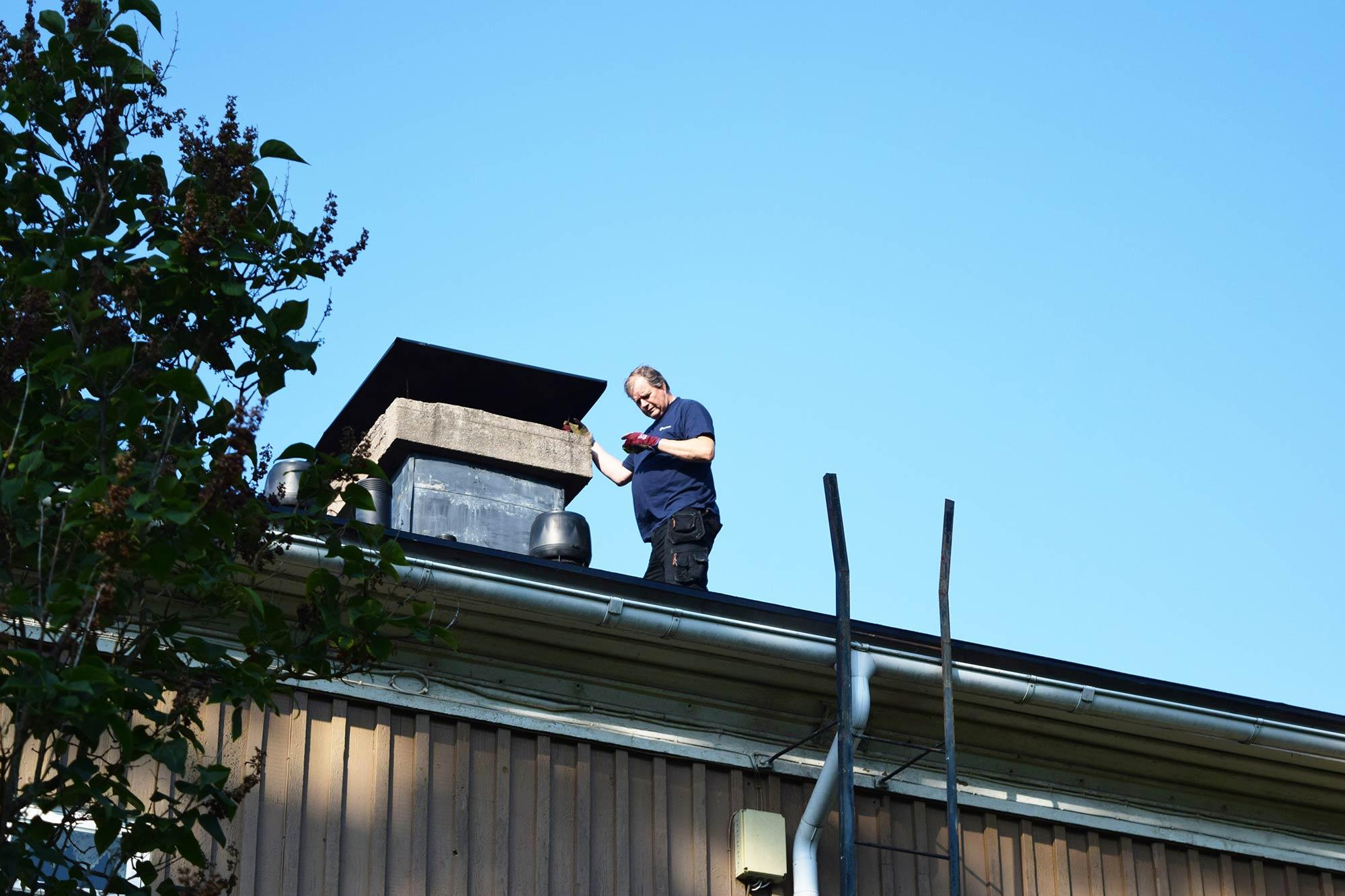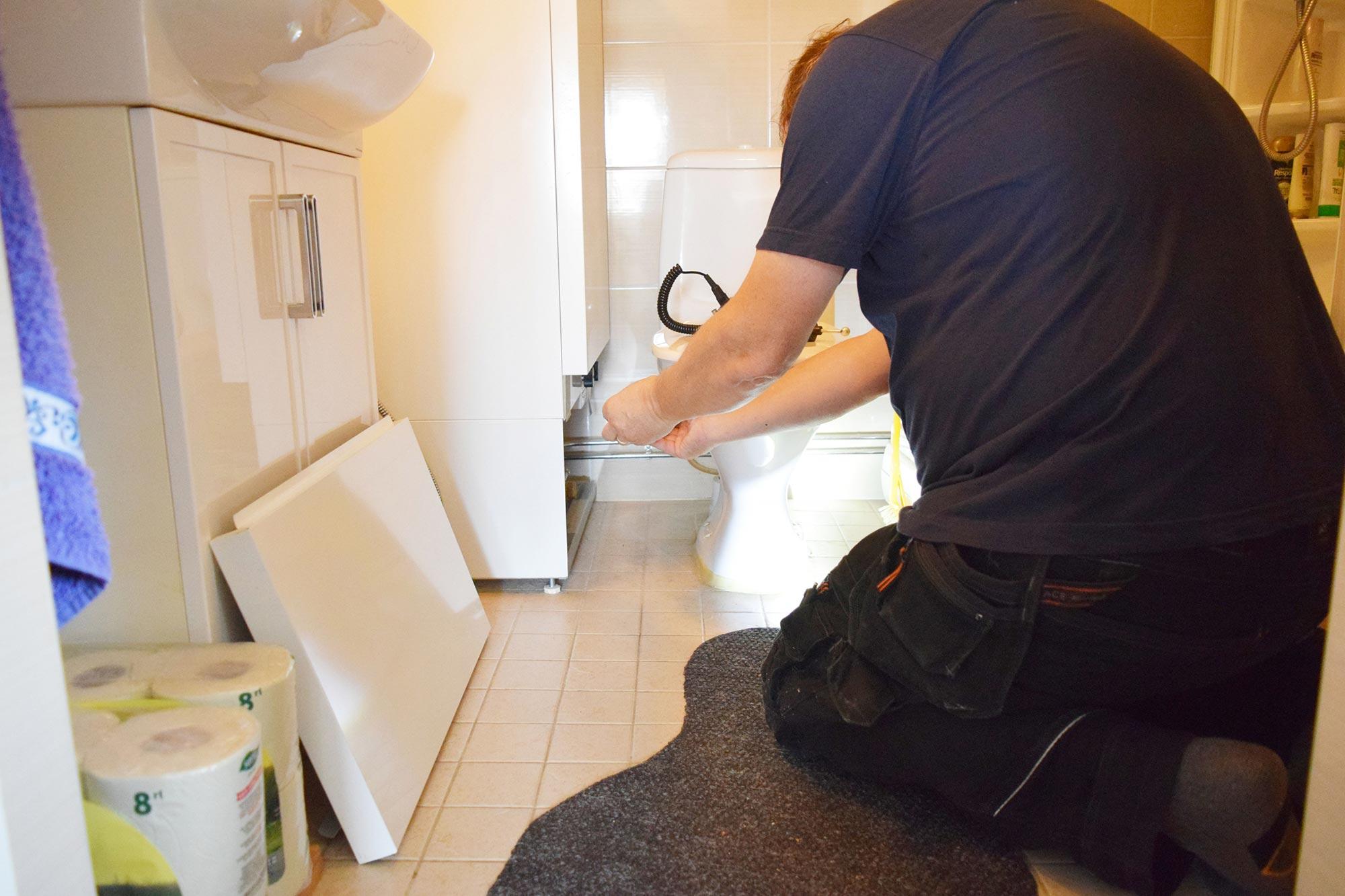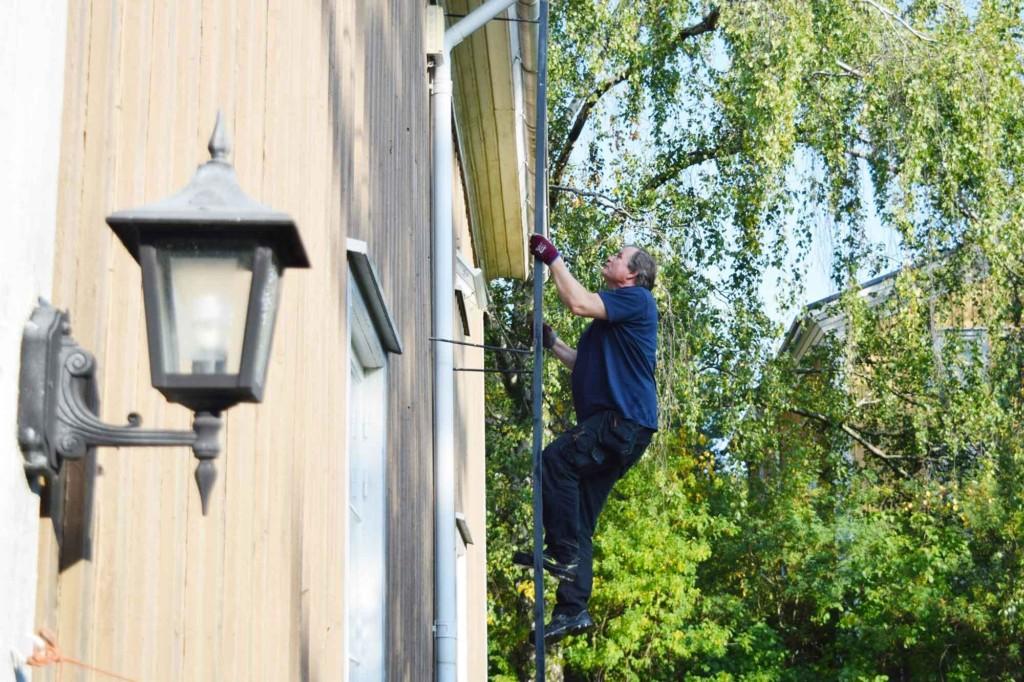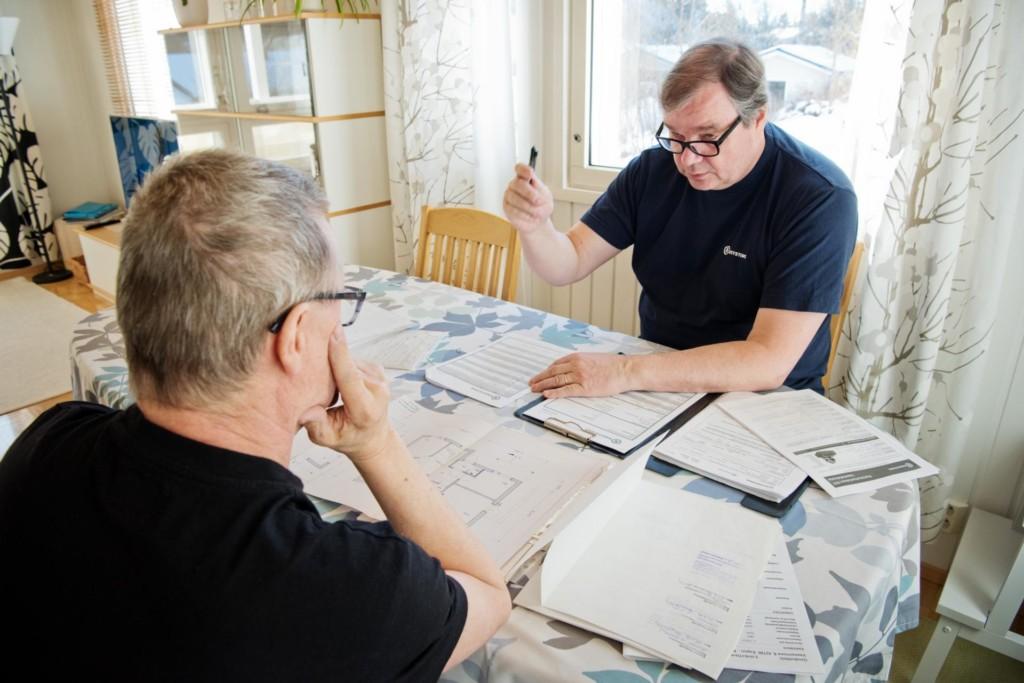What happens during a Housing Trade Condition Evaluation? A day with a condition inspector.
More and more homeowners order an inspection in due time before selling their home. That is what a couple from Helsinki did when they were about to sell their home, located in a semi-detached house.
They decided to have the condition of their home surveyed before selling it to be able to correctly determine the price. Many real estate agents also recommend this so that the condition of the home can be taken into account when determining the price and to ensure that any surprises are known in due time instead of just before the transaction is to take place. Raksystems performs its Housing Trade Condition Evaluations in compliance with the industry’s approved performance instructions (KH 90-00394). The impartial inspection is a superficial inspection of the home to be sold. The inspection provides information for the seller, the real estate agent and prospective buyers.
Today, the half of a semi-detached house will be inspected by construction engineer Jari Ohvo. He is one of Raksystems’ sixty condition inspectors. Jari has acquired the qualification of a housing trade condition inspector (AKK) while working. Jari performs some 120 inspections per year in addition to his other expert duties. He has been with Raksystems since 2011.
He has plenty of experience from the construction industry, and his approach to condition inspections is determined, detailed and warm. Let’s see what actually happens during a condition evaluation site visit!
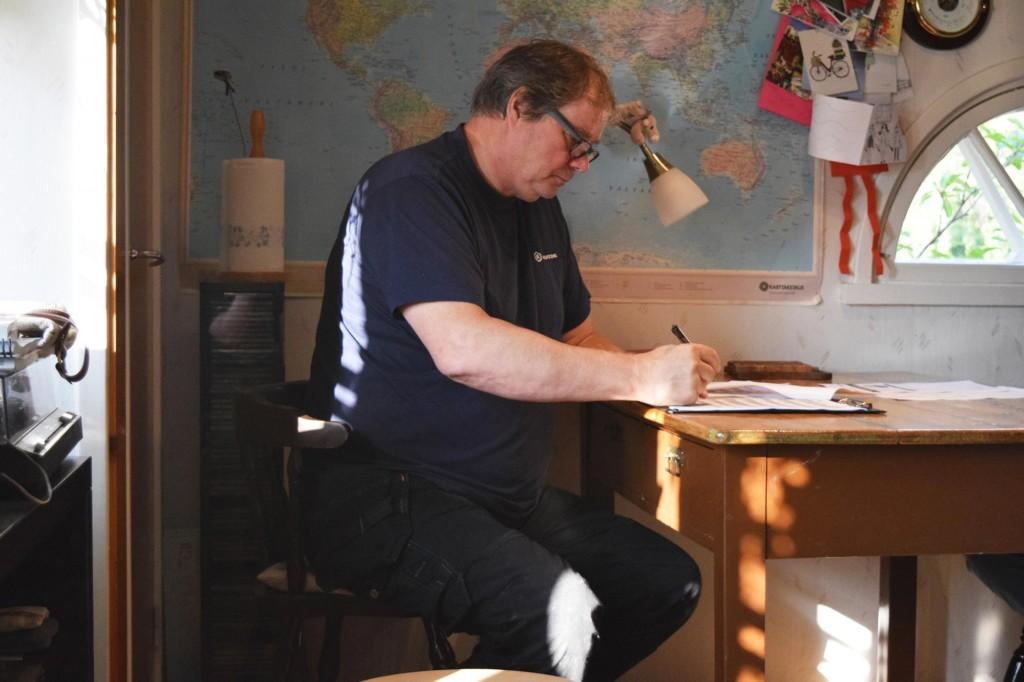
Inspection starts with the inspector getting ready
Our journey to the customer starts at the Raksystems head office in Vantaa. Jari, the condition inspector, says that he prepares for a site visit by familiarising himself with the agreement that was sent to the customer. It includes the basic information of the home: year of construction, property type, size and location. Already based on this information alone, a condition inspector can start to assess whether the home could include some potential high-risk structures that should be studied in more detail. Before leaving for the site, he makes sure that all the necessary tools and supplies are with him in his car.
At the inspection site, he is usually greeted by the customer and a real estate agent. That is the case now, too. The real estate agent is present during the site visit to obtain a better idea of the home to be sold. This will assist the real estate agent in pricing the home and offer them valuable information to be used when selling it.
Housing Trade Condition Evaluation starts with an initial interview form
A condition evaluation starts with a review of an initial interview form that the residents have filled out in advance. The form includes questions on, for instance, renovations done indoors and outdoors, the heating and electricity systems, the condition of weeping drains, the current status of the rainwater drain system, any observed damage and the property’s previous owners. If drawings for the home are available, the inspector will study them at this point. Drawings can provide the inspector with plenty of information about the home’s structures, the building solutions and any problematic areas.
If the residents are unable to answer all of the questions in the form, the inspection can reveal answers to many of the points or the need to perform further surveys. Furthermore, when the home is being discussed together, owners often remember some repairs that they have not been actively thinking about in years. The initial interview is one of the key steps in a condition evaluation, and it should be done with care.
Inspecting the home from the inside and outside
Once the initial data has been reviewed, the actual site visit begins. In the semi-detached house, we first look at all the indoor premises and then Jari takes the meters and devices he has brought with him to study the condition of structures in more detail.
In this instance, we proceed from indoors out and then back in – from upstairs all the way to the basement and from the chimney on the roof to a weeping drain manhole.
During the site visit, the owners explain the history of the building and what kind of renovations they have made or what kind of damage they have detected and repaired while living there.
All surfaces in all sanitary premises are studied with a humidity detector. All of the home’s structures and all spaces to which there is access are studied by means of a visual inspection. In addition, the current status of structures is inspected by visiting the crawlspace in the basement.
During the site visit, Jari also assesses the safety of the premises, such as the railings in stairs in between the different floors and the home’s fire safety status.
What is studied on the outside of the building?
After the indoor premises, we move outdoors. Jari studies with care what kind of plants there are in the immediate vicinity of the house. Different types of plants growing right next to a building can damage the structures. Vegetation crawling along walls can also damage the exterior face and other structures of the building. Jari also takes a peek under the pergola in front of the main entrance and studies the condition of the main entrance stairs.
There is a lively discussion about the property’s rainwater drain system, and the current status of the weeping drain manhole and the location of the weeping drain pipe ending at the manhole in relation to the house’s base floor are checked. The pipes of the rainwater drain system should remain outside the building’s foundation to ensure that the rainwater flowing through the pipes will not wet the foundation of the home.
Jari also climbs onto the roof to look at the roof and the chimney. The chimney acts as a transition to a survey of the fire safety of the home. Jari reviews with the owners the condition of the fire escape ladder and the significance of placing a protective board above the ladder. He also notes that there are no fixed handles to open the upstairs windows. The current fire safety regulations require a fixed handle in each window so that the window can be used as an emergency exit if necessary.
Finally, a summary of the condition evaluation
Once the site visit is done, the inspector will orally review the most important observations about the condition of the home with the people present. At this point, the owners, the real estate agent and the prospective buyer (if any) can ask questions about the observations made and defects observed. The customer and also the real estate agent, if necessary, will receive a written report on the Housing Trade Condition Evaluation at a later point in time.
Condition evaluation report provides an overall view of the home’s condition, any repair needs and recommended repair actions
The clear-cut report includes photos and explains all the observations made during the site visit and recommendations given on the basis of these observations. The inspection scope includes the drilling of a maximum of three holes. Such holes will be made in any structures where it is necessary to measure the humidity level due to suspected damage.
Alternatively, up to three structures can opened with a hole cutter. If the suspected structural element cannot be surveyed by using non-destructive methods, the inspector will recommend further surveys. You should take heed of the recommendations given, because a condition evaluation in itself does not guarantee good condition of the structures of the home being sold.
Orders for any recommended further surveys should be placed to verify the condition of the structures. Furthermore, when you have specific information about the condition of the system or other structural element to be repaired, you will be able to correctly schedule and plan the repair actions. The scope of any damage and the level of the required repairs needed cannot be assessed until during the further survey.
Housing Trade Condition Evaluation secures the seller’s duty to disclose information
When a home is being sold, the seller has a duty to disclose information and the buyer has a duty to request information. A Housing Trade Condition Evaluation will assist them both in this, but it does not replace the parties’ obligations during a housing transaction.
The seller should study the condition evaluation report with care to be able to take into account the recommended actions and the condition inspector’s observations when selling the home. Meanwhile, the prospective buyer can request information on the observations made by the expert during the condition evaluation and the recommended actions to obtain a comprehensive idea of the condition of the home being sold.


